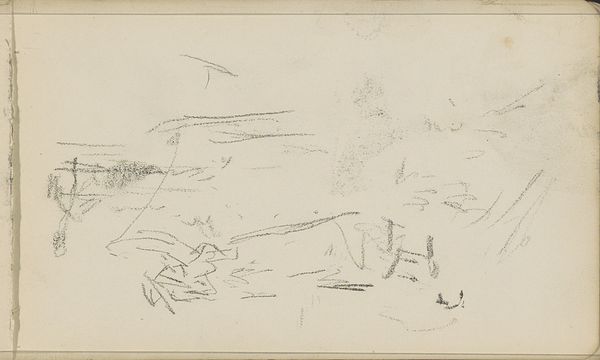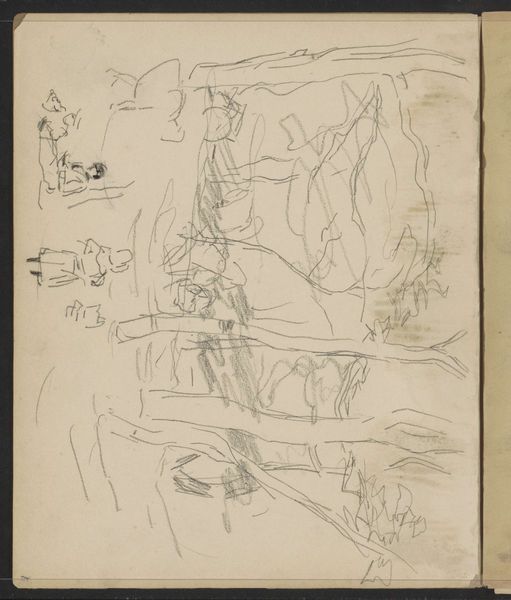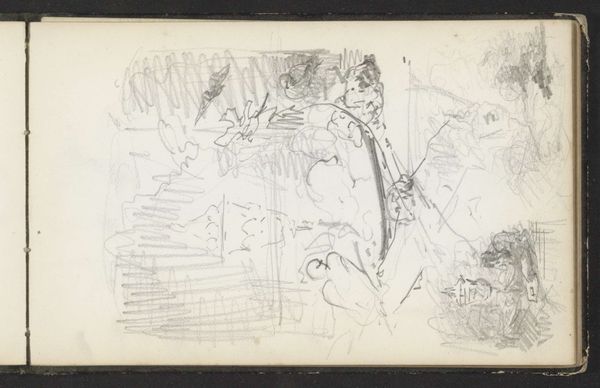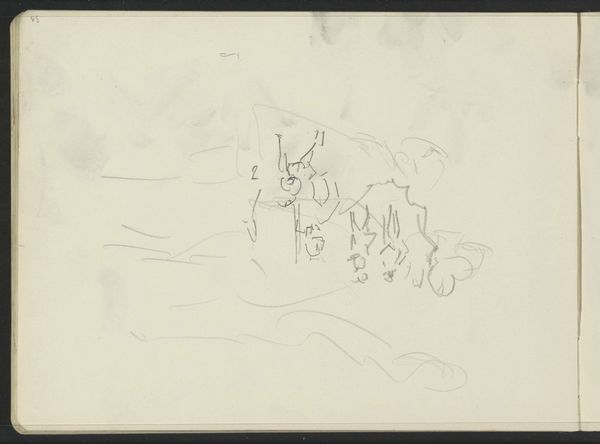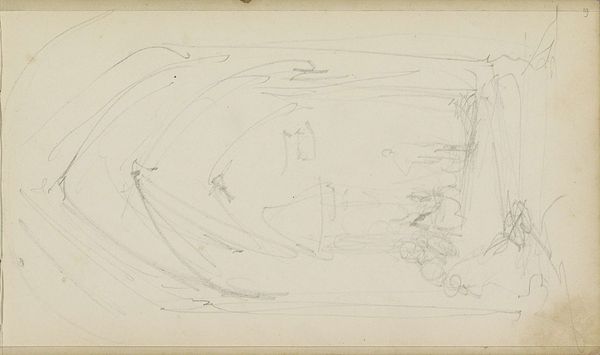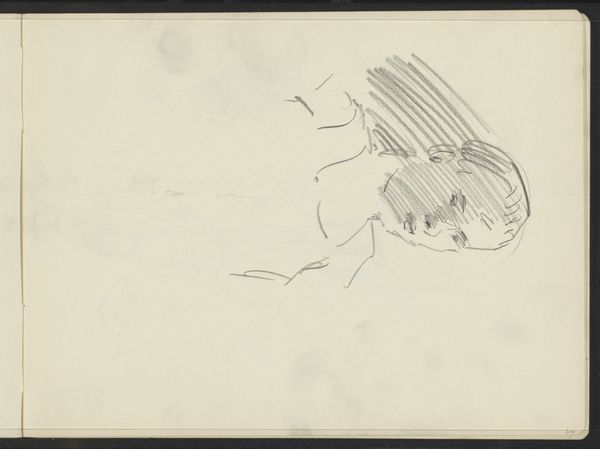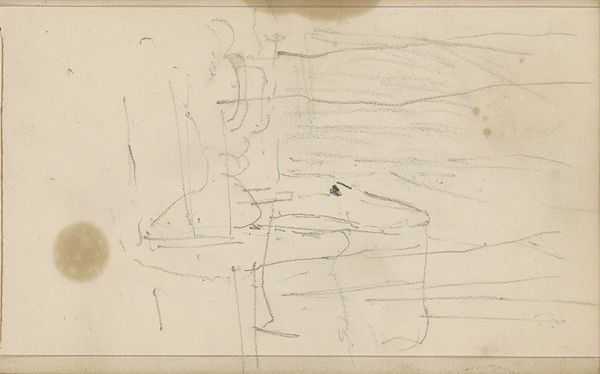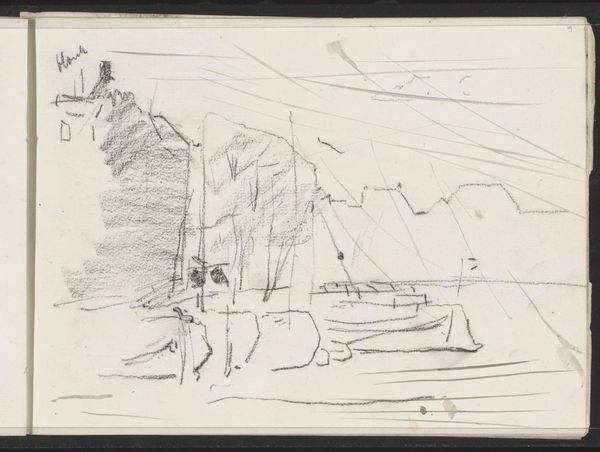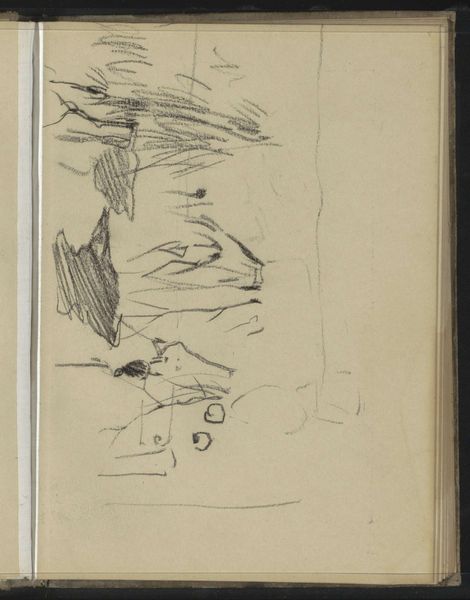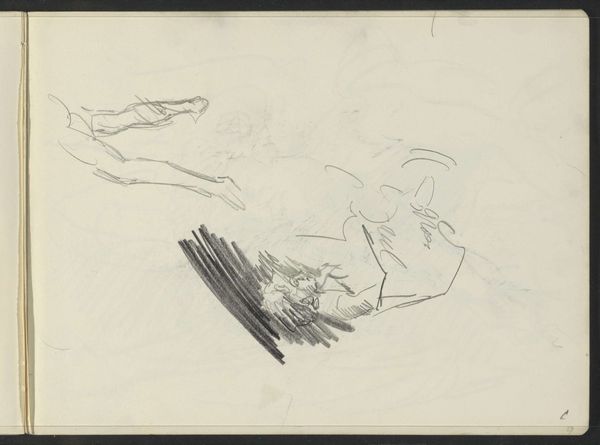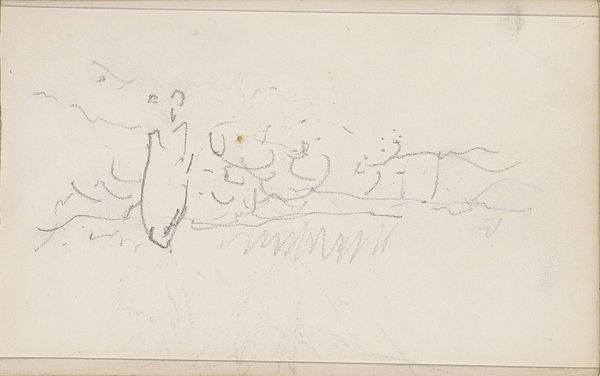
drawing, pencil
#
portrait
#
drawing
#
pen sketch
#
figuration
#
pencil
Copyright: Rijks Museum: Open Domain
Ferdinand Oldewelt made this pencil drawing, titled 'Wallflowers,' some time in the late nineteenth or early twentieth century in the Netherlands. The title and quickly sketched figures hint at a story about the social lives of women at the time. In Dutch, as in English, 'wallflowers' is a term for women who are excluded from social events, left on the margins of society. The artist here uses quick, broken lines and blocks of shadow to suggest these women's exclusion. The drawing's unfinished quality suggests a society that has not yet resolved the place of women. Were these women considered socially awkward, perhaps because of their appearance or their opinions? Were their families not wealthy enough to warrant a good match? To understand this drawing better, scholars might look to contemporary etiquette guides, marriage registries, and newspaper articles. By putting this image back into its original social and institutional context, we can see how art reflects and shapes people’s experiences.
Comments
No comments
Be the first to comment and join the conversation on the ultimate creative platform.

